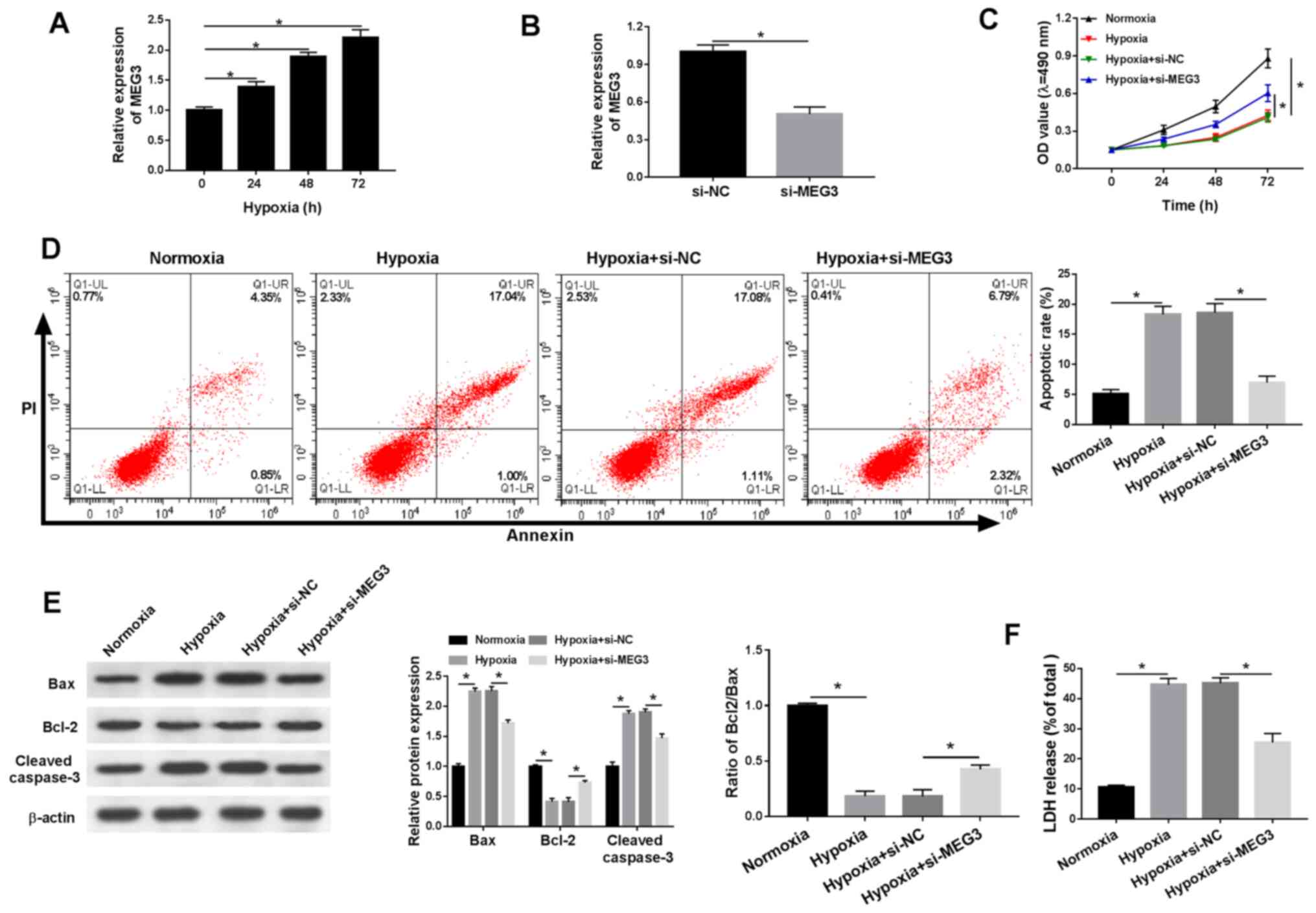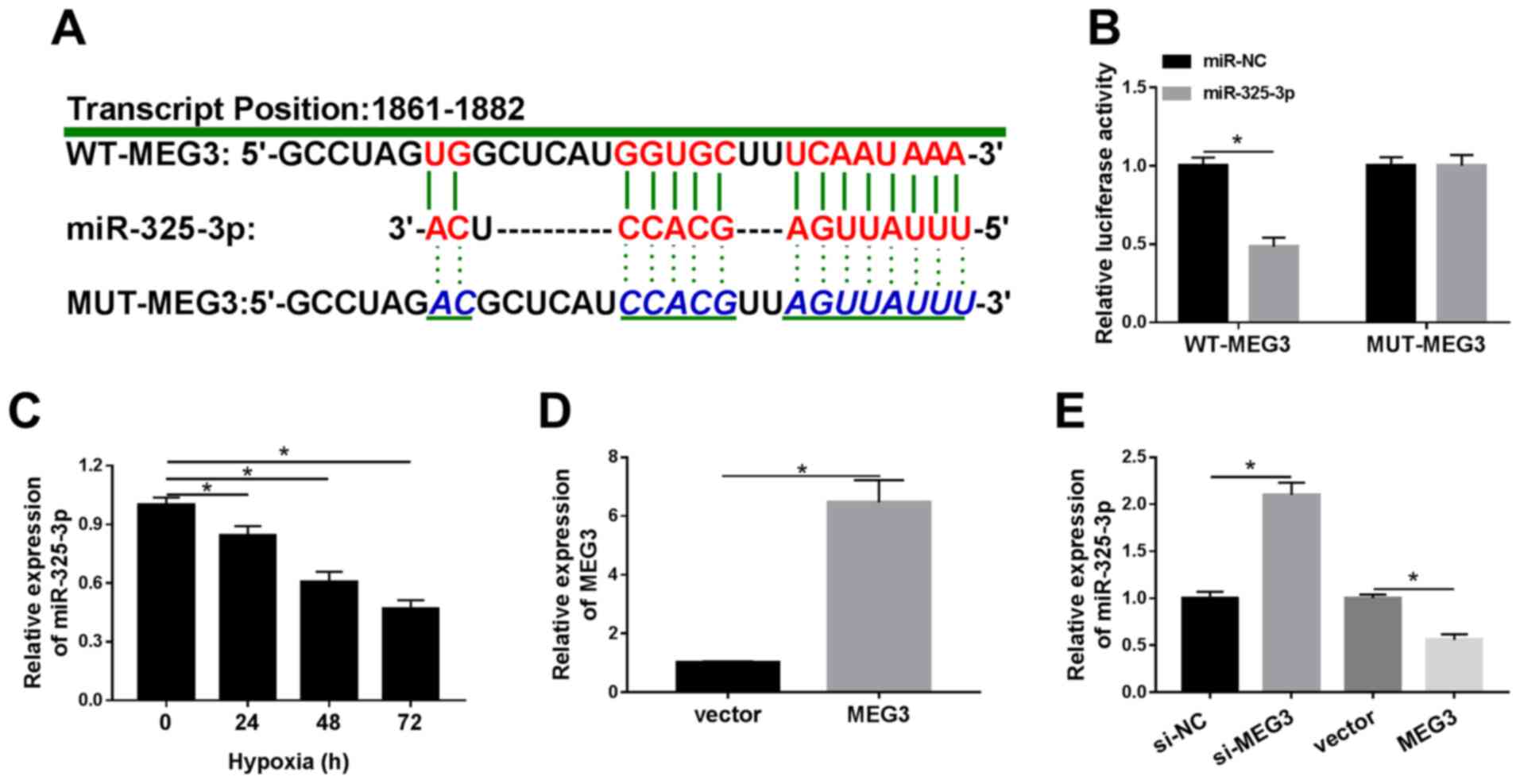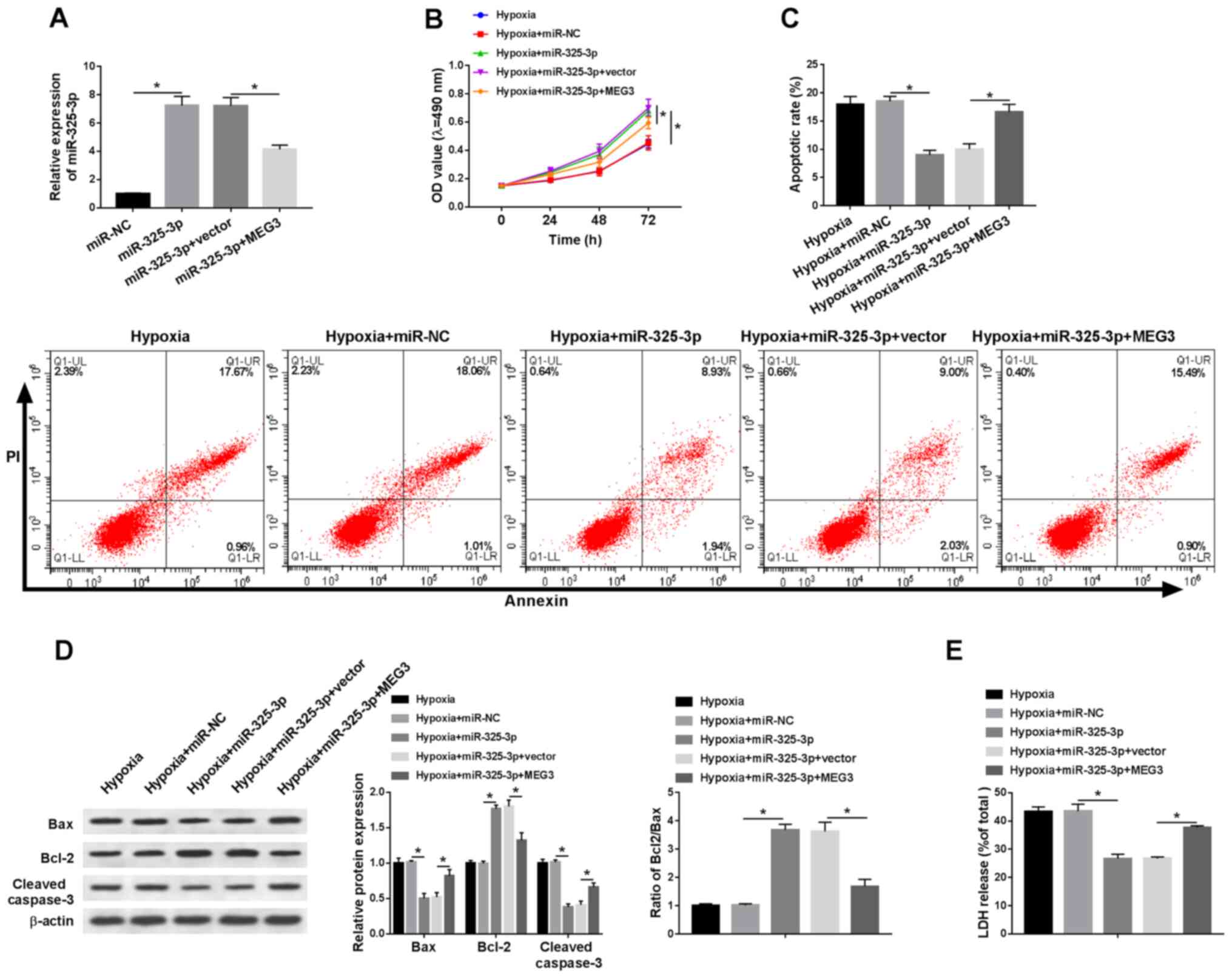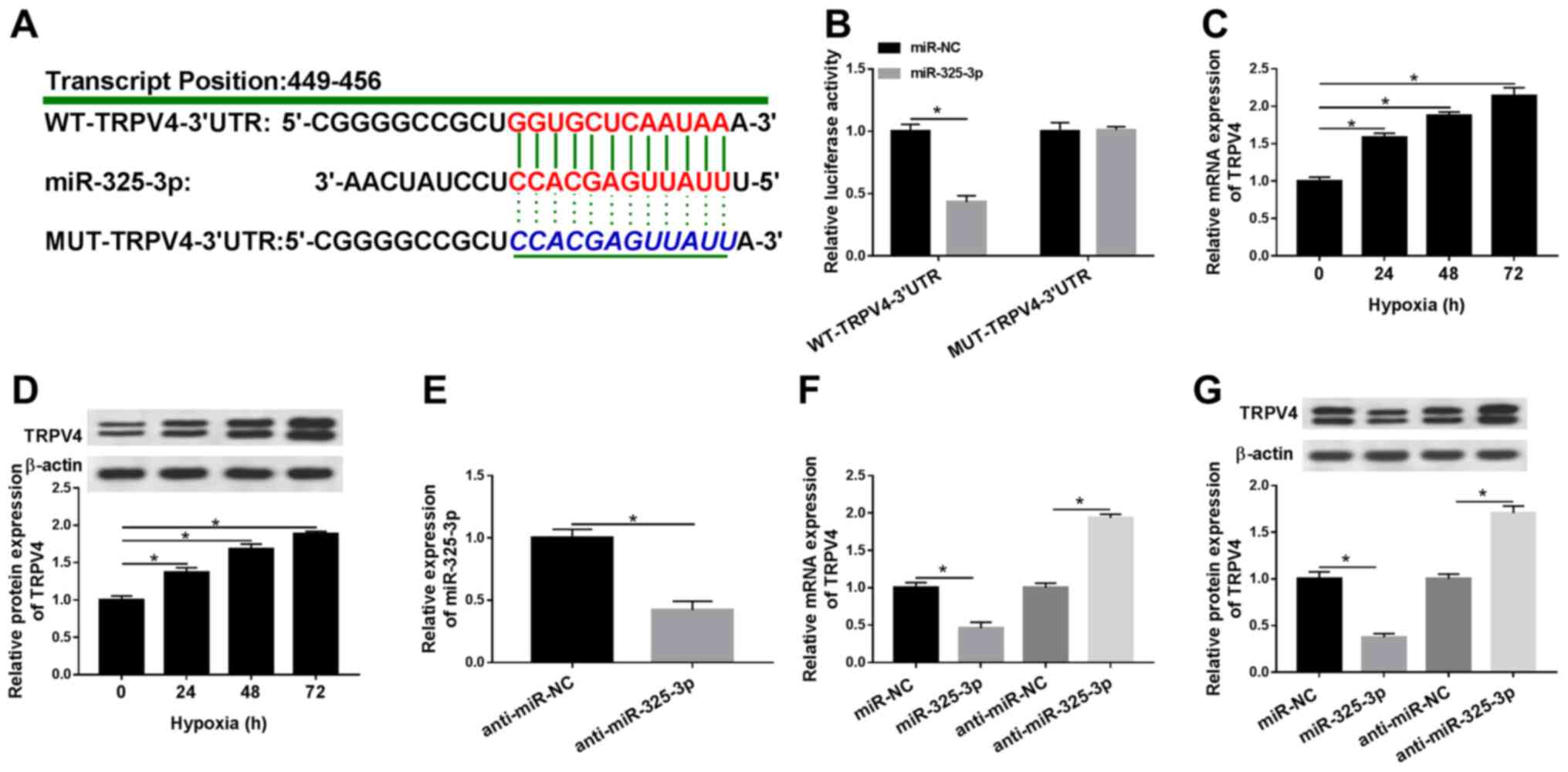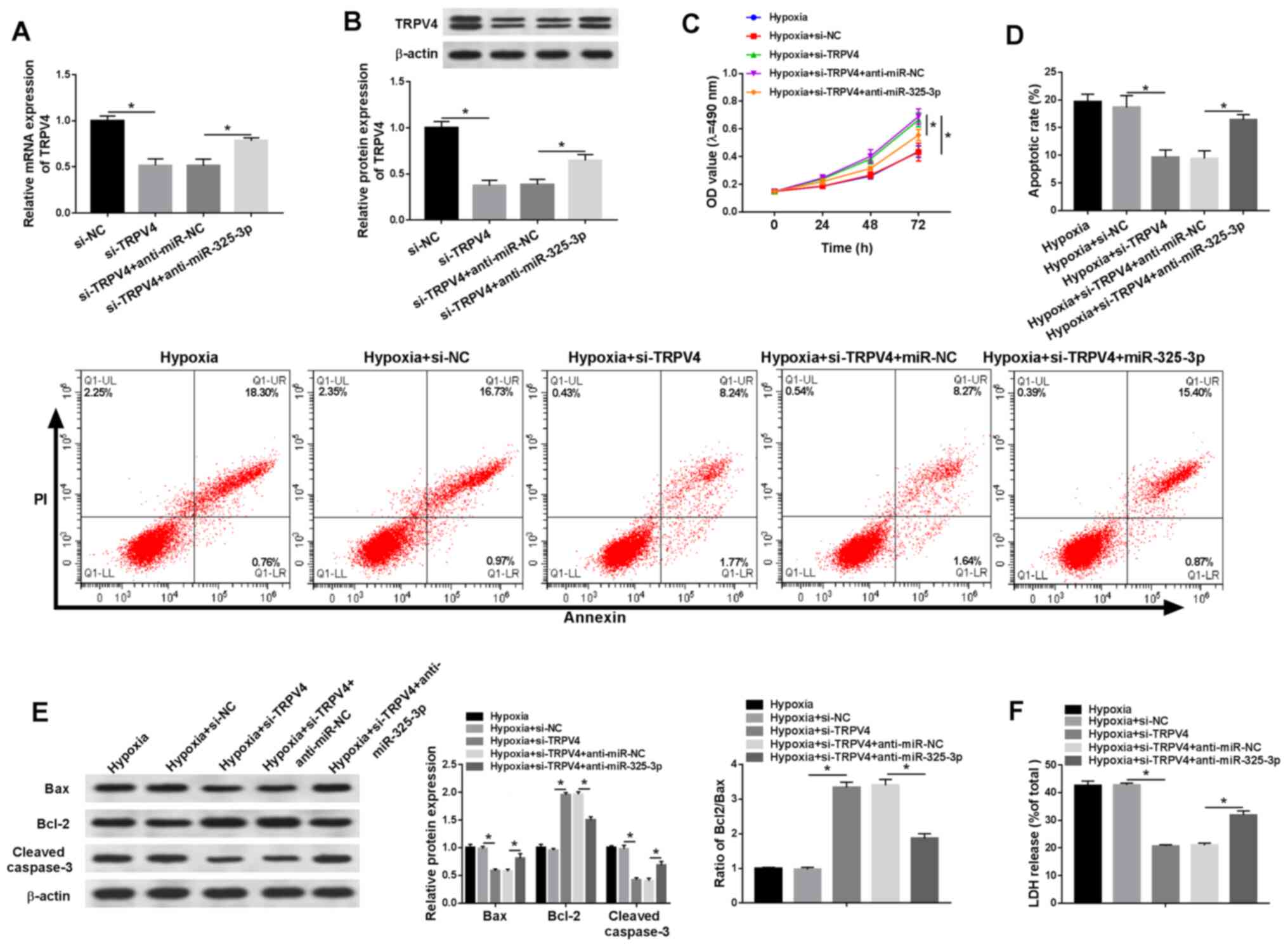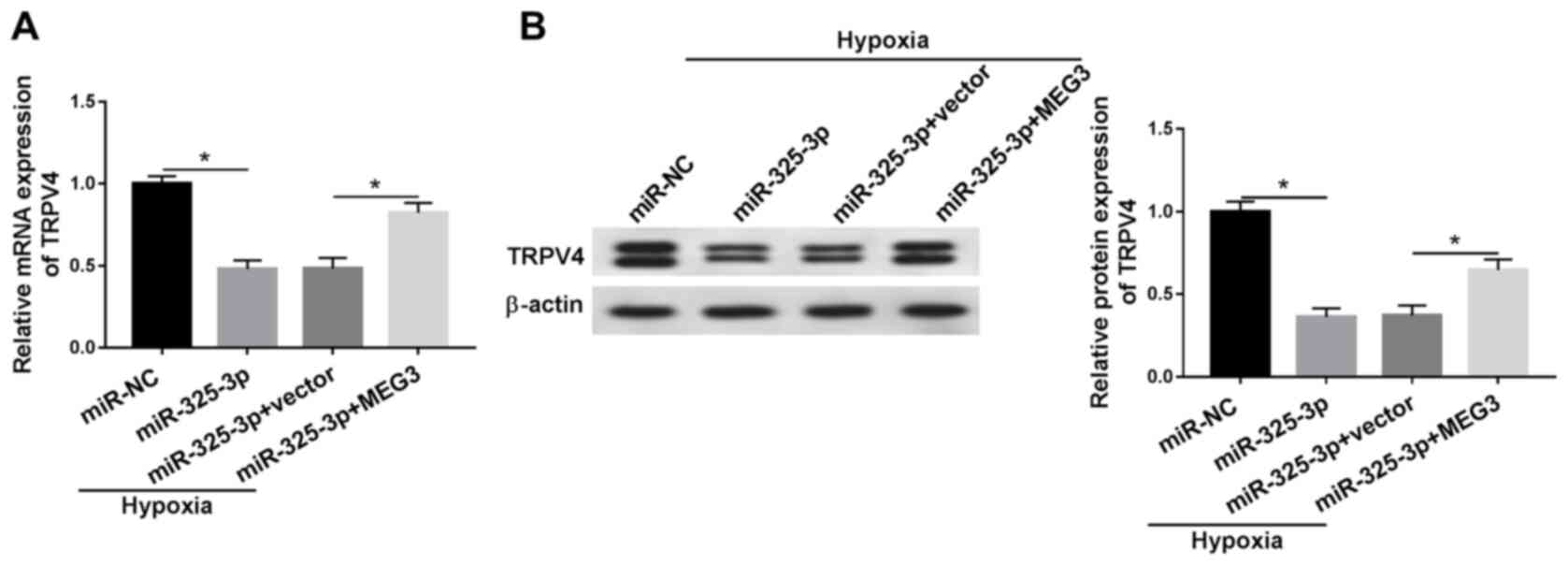|
1
|
Anderson JL and Morrow DA: Acute
myocardial infarction. N Engl J Med. 376:2053–2064. 2017.
View Article : Google Scholar : PubMed/NCBI
|
|
2
|
Li J, Li X, Wang Q, Hu S, Wang Y, Masoudi
FA, Spertus JA, Krumholz HM and Jiang L; China PEACE Collaborative
Group, : ST-segment elevation myocardial infarction in China from
2001 to 2011 (The China PEACE-retrospective acute myocardial
infarction study): A retrospective analysis of hospital data.
Lancet. 385:441–451. 2015. View Article : Google Scholar : PubMed/NCBI
|
|
3
|
Mathieu EL, Belhocine M, Dao L, Puthier D
and Spicuglia S: Functions of lncRNA in development and diseases.
Med Sci (Paris). 30:790–796. 2014.(In French). View Article : Google Scholar : PubMed/NCBI
|
|
4
|
Hu H, Wu J, Li D, Zhou J, Yu H and Ma L:
Knockdown of lncRNA MALAT1 attenuates acute myocardial infarction
through miR-320-Pten axis. Biomed Pharmacother. 106:738–746. 2018.
View Article : Google Scholar : PubMed/NCBI
|
|
5
|
Huang S, Tao W, Guo Z, Cao J and Huang X:
Suppression of long noncoding RNA TTTY15 attenuates hypoxia-induced
cardiomyocytes injury by targeting miR-455-5p. Gene. 701:1–8. 2019.
View Article : Google Scholar : PubMed/NCBI
|
|
6
|
Wu H, Zhao ZA, Liu J, Hao K, Yu Y, Han X,
Li J, Wang Y, Lei W, Dong N, et al: Long noncoding RNA Meg3
regulates cardiomyocyte apoptosis in myocardial infarction. Gene
Ther. 25:511–523. 2018. View Article : Google Scholar : PubMed/NCBI
|
|
7
|
Gong L, Xu H, Chang H, Tong Y, Zhang T and
Guo G: Knockdown of long non-coding RNA MEG3 protects H9c2 cells
from hypoxia-induced injury by targeting microRNA-183. J Cell
Biochem. 119:1429–1440. 2018. View Article : Google Scholar : PubMed/NCBI
|
|
8
|
Huang Y, Shen XJ, Zou Q, Wang SP, Tang SM
and Zhang GZ: Biological functions of microRNAs: A review. J
Physiol Biochem. 67:129–139. 2011. View Article : Google Scholar : PubMed/NCBI
|
|
9
|
Chen Y, Zhao Y, Chen W, Xie L, Zhao ZA,
Yang J, Chen Y, Lei W and Shen Z: MicroRNA-133 overexpression
promotes the therapeutic efficacy of mesenchymal stem cells on
acute myocardial infarction. Stem Cell Res Ther. 8:2682017.
View Article : Google Scholar : PubMed/NCBI
|
|
10
|
Zhang M, Cheng YJ, Sara JD, Liu LJ, Liu
LP, Zhao X and Gao H: Circulating microRNA-145 is associated with
acute myocardial infarction and heart failure. Chin Med J (Engl).
130:51–56. 2017. View Article : Google Scholar : PubMed/NCBI
|
|
11
|
Zhang DY, Wang BJ, Ma M, Yu K, Zhang Q and
Zhang XW: MicroRNA-325-3p protects the heart after myocardial
infarction by inhibiting RIPK3 and programmed necrosis in mice. BMC
Mol Biol. 20:172019. View Article : Google Scholar : PubMed/NCBI
|
|
12
|
Grace MS, Bonvini SJ, Belvisi MG and
McIntyre P: Modulation of the TRPV4 ion channel as a therapeutic
target for disease. Pharmacol Ther. 177:9–22. 2017. View Article : Google Scholar : PubMed/NCBI
|
|
13
|
Rath G, Saliez J, Behets G, Romero-Perez
M, Leon-Gomez E, Bouzin C, Vriens J, Nilius B, Feron O and Dessy C:
Vascular hypoxic preconditioning relies on TRPV4-dependent calcium
influx and proper intercellular gap junctions communication.
Arterioscler Thromb Vasc Biol. 32:2241–2249. 2012. View Article : Google Scholar : PubMed/NCBI
|
|
14
|
Livak KJ and Schmittgen TD: Analysis of
relative gene expression data using real-time quantitative PCR and
the 2(-Delta Delta C(T)) method. Methods. 25:402–408. 2001.
View Article : Google Scholar : PubMed/NCBI
|
|
15
|
Kietzmann T, Samoylenko A, Roth U and
Jungermann K: Hypoxia-inducible factor-1 and hypoxia response
elements mediate the induction of plasminogen activator inhibitor-1
gene expression by insulin in primary rat hepatocytes. Blood.
101:907–914. 2003. View Article : Google Scholar : PubMed/NCBI
|
|
16
|
Yu B and Wang W: Cardioprotective effects
of morroniside in rats following acute myocardial infarction.
Inflammation. 41:432–436. 2018. View Article : Google Scholar : PubMed/NCBI
|
|
17
|
Qiu H, Liu JY, Wei D, Li N, Yamoah EN,
Hammock BD and Chiamvimonvat N: Cardiac-generated prostanoids
mediate cardiac myocyte apoptosis after myocardial ischaemia.
Cardiovasc Res. 95:336–345. 2012. View Article : Google Scholar : PubMed/NCBI
|
|
18
|
Uchida S and Dimmeler S: Long noncoding
RNAs in cardiovascular diseases. Circ Res. 116:737–750. 2015.
View Article : Google Scholar : PubMed/NCBI
|
|
19
|
Yi J, Chen B, Yao X, Lei Y, Ou F and Huang
F: Upregulation of the lncRNA MEG3 improves cognitive impairment,
alleviates neuronal damage, and inhibits activation of astrocytes
in hippocampus tissues in Alzheimer's disease through inactivating
the PI3K/Akt signaling pathway. J Cell Biochem. 120:18053–18065.
2019. View Article : Google Scholar : PubMed/NCBI
|
|
20
|
Wang X and Wang J: High-content hydrogen
water-induced downregulation of miR-136 alleviates non-alcoholic
fatty liver disease by regulating Nrf2 via targeting MEG3. Biol
Chem. 399:397–406. 2018. View Article : Google Scholar : PubMed/NCBI
|
|
21
|
Zhang Z, Han Y, Sun G, Liu X, Jia X and Yu
X: MicroRNA-325-3p inhibits cell proliferation and induces
apoptosis in hepatitis B virus-related hepatocellular carcinoma by
down-regulation of aquaporin 5. Cell Mol Biol Lett. 24:132019.
View Article : Google Scholar : PubMed/NCBI
|
|
22
|
Yang Y, Sun B, Huang J, Xu L, Pan J, Fang
C, Li M, Li G, Tao Y, Yang X, et al: Up-regulation of miR-325-3p
suppresses pineal aralkylamine N-acetyltransferase (Aanat) after
neonatal hypoxia-ischemia brain injury in rats. Brain Res.
1668:28–35. 2017. View Article : Google Scholar : PubMed/NCBI
|
|
23
|
Wu QF, Qian C, Zhao N, Dong Q, Li J, Wang
BB, Chen L, Yu L, Han B, Du YM and Liao YH: Activation of transient
receptor potential vanilloid 4 involves in hypoxia/reoxygenation
injury in cardiomyocytes. Cell Death Dis. 8:e28282017. View Article : Google Scholar : PubMed/NCBI
|
|
24
|
Gorbunov AS, Maslov LN, Jaggi AS, Singh N,
De Petrocellis L, Boshchenko AA, Roohbakhsh A, Bezuglov VV and
Oeltgen PR: Physiological and pathological role of TRPV1, TRPV2 and
TRPV4 channels in heart. Curr Cardiol Rev. 15:244–251. 2019.
View Article : Google Scholar : PubMed/NCBI
|
















